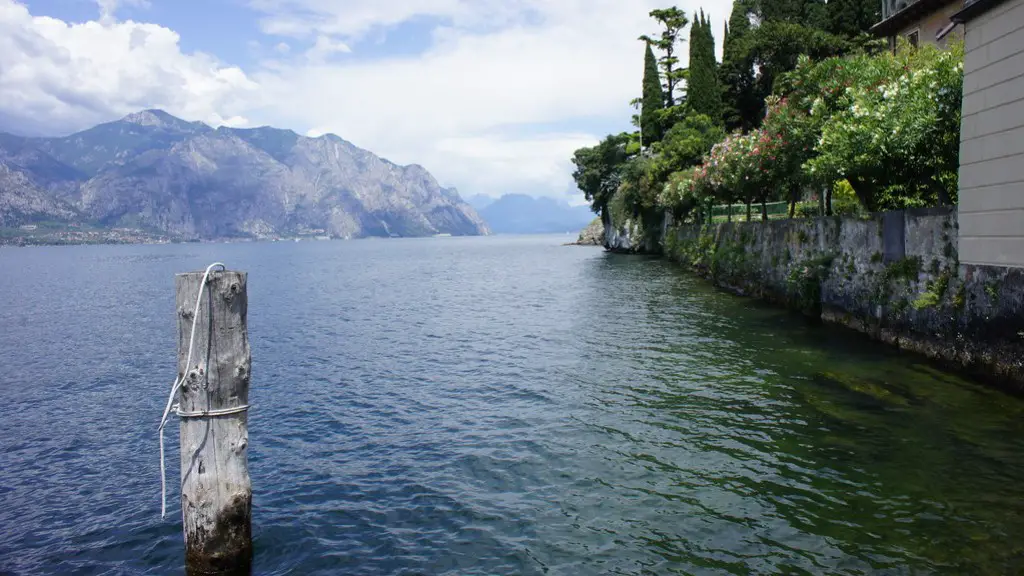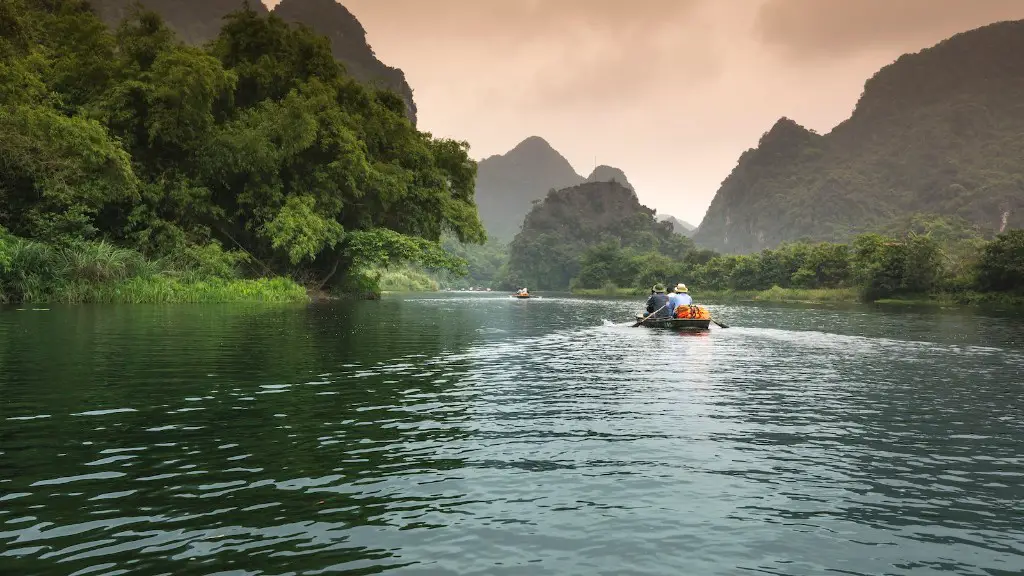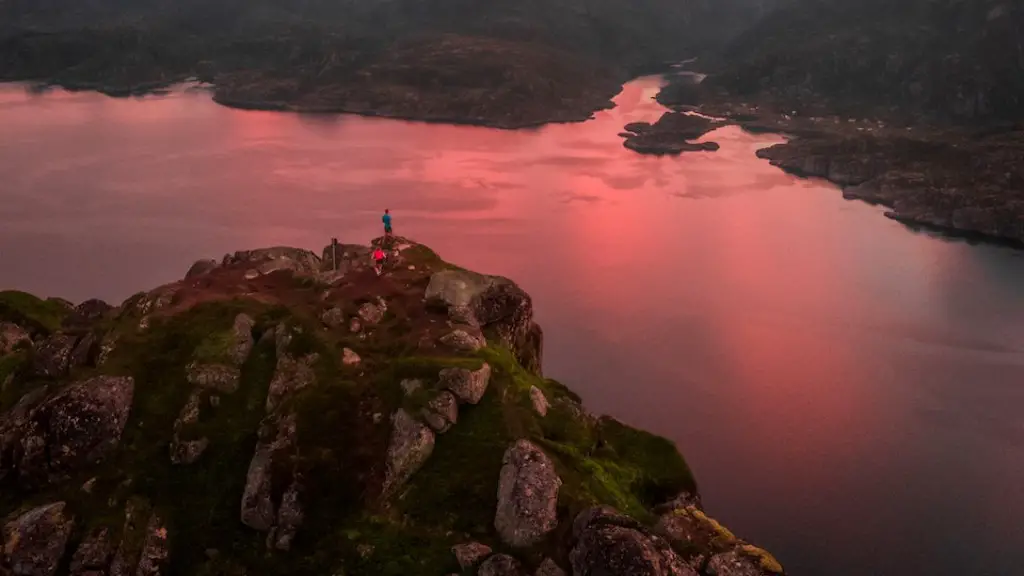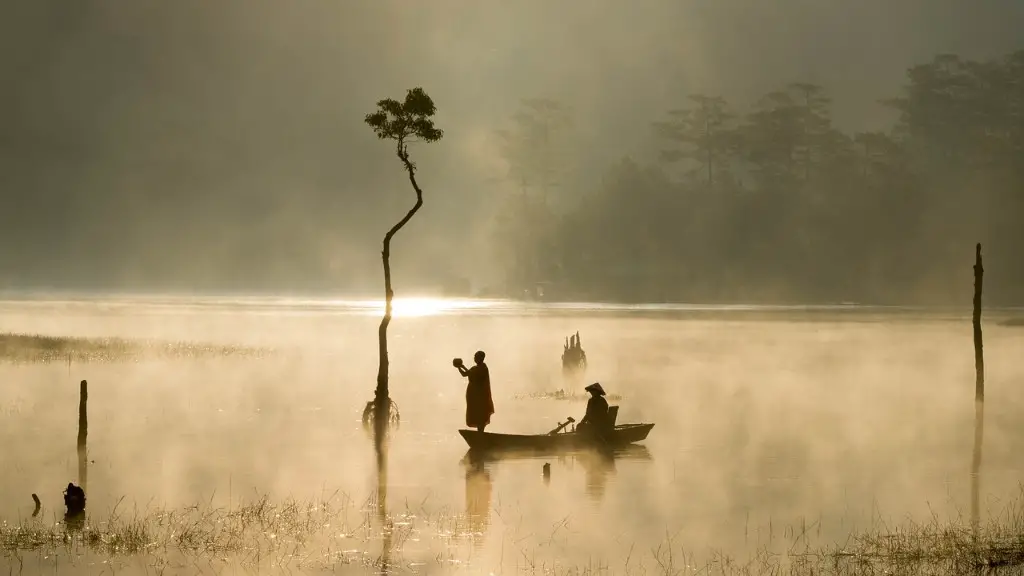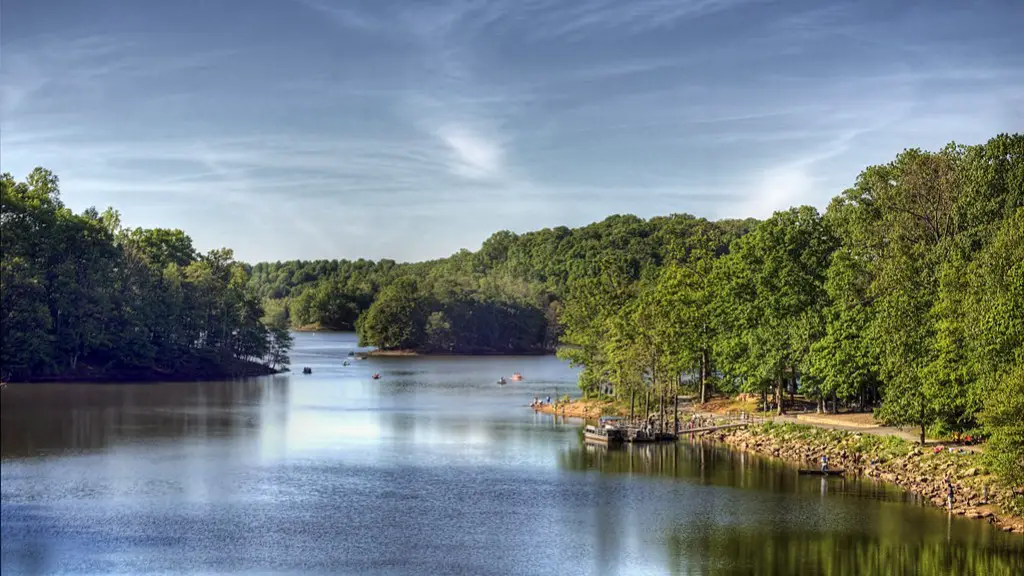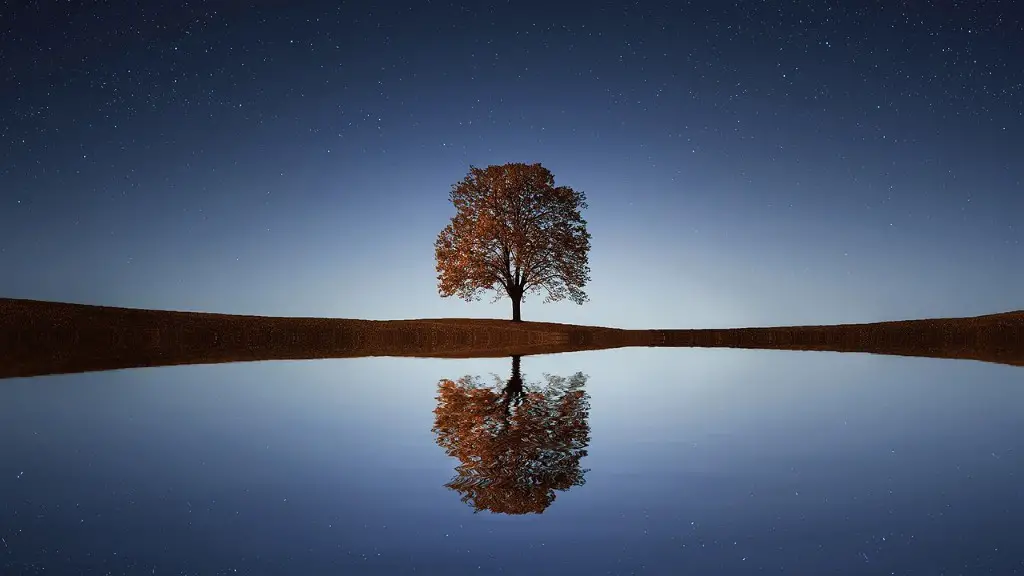Crater Lake is a 6-mile-wide caldera in the Cascade Mountains of southern Oregon. It is the remains of a former 12,000-foot volcano named Mount Mazama that collapsed 7,700 years ago. Crater Lake is the deepest lake in the United States and the seventh deepest in the world. The lake is 1,949 feet deep at its deepest point, which is deeper than the height of the Empire State Building.
The depths of Crater Lake in Oregon vary depending on the location within the lake. The deepest point is at the center of the lake where it is about 1,949 feet deep.
What is at the bottom of Crater Lake?
The moss at the bottom of Crater Lake is a fascinating geological feature. Over thousands of years, layers of dead moss accumulate, sometimes reaching 40 yards thick. This moss forms a tunnel through which water flows, and is an important part of the Crater Lake ecosystem.
The blue beauty of Crater Lake extends beyond its depth. The water is a deep, gorgeous blue and visitors can swim at designated areas, but beware — the water is usually very cold!
Why is Crater Lake so deep
The Crater Lake Volcano Eruption was one of the most powerful eruptions in the world in the past 12,000 years and is the primary reason why Crater Lake is so deep. The eruption created a large crater that eventually filled with water, creating the stunning lake that we see today.
Crater Lake is one of the deepest lakes in the United States and one of the deepest in the world. The depths were first explored thoroughly in 1886 by a party from the US Geological Survey. The lake is located in Oregon and is a popular tourist destination.
Why is there no fish in Crater Lake?
Crater Lake was naturally barren of fish until park founder William Steel first stocked Crater Lake with trout fingerlings in 1888. Despite altering the lake’s natural condition, introductions of non-native fish continued until 1941, when stocking the lake ended. Today, the only fish present in Crater Lake are the descendants of those original stocking efforts. While the stocking of Crater Lake changed the lake’s ecosystem, it ultimately created a more enjoyable recreational experience for visitors.
The Common Garter Snake is a species of snake that is found in many parts of North America. One of the most notable things about this snake is that it comes in a variety of different colors and patterns, including a completely black phase. This black phase is found in the caldera of Crater Lake and is thought to have evolved as a result of protective coloration against the black volcanic rocks found there. Common Garter Snakes grow to a length of 3 feet on average.
Is Crater Lake drinkable?
The park’s mission to preserve Crater Lake would be conflicted if people were allowed to consume the lake water. The park has a water claim for the lake which is for the preservation and protection of all natural habitats and the conservation of scenery. Allowing human consumption of the lake water would go against this claim.
Between 1888 and 1941, the lake was stocked with seven different species of fish. However, only two of those species thrive today. It is presently estimated that the lake supports approximately 60,000 kokanee salmon and rainbow trout.
Are there big fish in Crater Lake
The 65-pounder trout caught in Crater Lake is the largest on record. The average length of the species is 10-14 inches, but this fish was 26 inches long! Kokanee salmon and rainbow trout both thrive in Crater Lake, making it a great place to fish for recreation.
Hydrothermal explosions are a type of volcanic eruption caused by the interaction of water and magma. These explosions can be extremely violent and can cause extensive damage to nearby areas. Ash and tephra fall from these eruptions can also be dangerous, as they can cause roofs to collapse and bury people alive. Pyroclastic surges are another hazard associated with hydrothermal explosions, as they can travel long distances at high speeds and cause extensive damage. Lahars, or mudflows, are another potential hazard, as they can travel down slopes and bury people and buildings. Landslides and rockfalls are also a risk during hydrothermal explosions, as the ground can become unstable and collapse.
Will Crater Lake ever erupt again?
The long history of volcanism at Mount Mazama means that future eruptions are very likely. Most likely, these eruptions will happen within the caldera, and they may even happen beneath the water’s surface. This is a very dangerous situation, and people should be aware of the potential risks.
Crater Lake is one of the most beautiful places on earth. Its clean water and clear visibility are unmatched anywhere else in the world. scientists consider it to be the cleanest lake in the US and the entire world. It is also the clearest, with visibility up to 100 feet and sunlight pervading down some 400 feet. Crater Lake is a must-see for anyone who loves nature and wants to experience its beauty firsthand.
What is the #1 lake in America
Lake Superior is one of the largest lakes of the United States by area. It is located between the states of Michigan and Minnesota and is bounded by the Canadian province of Ontario. The lake has a surface area of more than 82,000 square kilometers and is the largest body of freshwater in the world.
Lake Baikal, Russia is the oldest and deepest lake in the world. The 315-million-ha lake is situated in south-east Siberia. The 25 million year old lake is home to a variety of plant and animal life. The 1,700 m deep lake is a popular tourist destination.
What is the US largest man made lake?
Lake Mead is the largest reservoir in the United States, with a capacity of 28,255,000 acre-feet. It is located in Nevada and was named after Bureau of Reclamation Commissioner Elwood Mead. The reservoir has a shoreline of 759 miles and a maximum depth of 532 feet.
The largest documented rainbow trout from Crater Lake was a 6 1/2 pound, 26 inch long specimen caught by the park research team. The fish was caught in July of 2001 and was released back into the lake. Crater Lake is home to a number of different trout species, including rainbow, brown, and cutthroat trout. The lake is also home to a number of different types of fish, including kokanee salmon and various types of bass.
Why can’t you swim in Crater Lake Oregon
Crater Lake is one of the snowiest places in America and usually only has a few months when people can swim due to the extreme winter season. The average amount of snowfall per year is 43 feet. Visitors to the lake can typically swim from June to September.
The water is pretty cold, especially deep down. The average temperature is only 38 degrees. In the summer, the surface can get up to 55 or 60 degrees, but that doesn’t last long.
Warp Up
The average depth of Crater Lake is 1,148 feet (350 meters), making it the deepest lake in the United States. The deepest point in the lake is 2,148 feet (655 meters), which is located near Wizard Island.
The average depth of Crater Lake is 1,148 feet (350 m), with a maximum depth of 1,949 feet (594 m).
